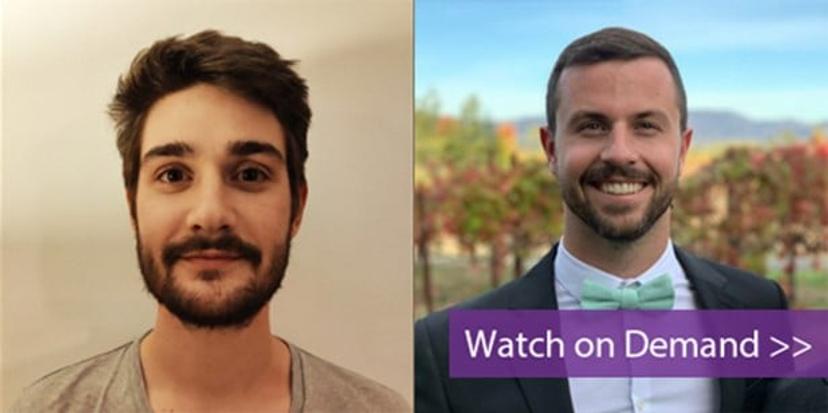Free masterclass on oligo printing via enzymatic DNA synthesis
In this on-demand SelectScience webinar, explore how the DNA script SYNTAX System can be used in enzymatic DNA synthesis
23 Nov 2021

Many biotechnology companies are now looking at utilizing the potential of enzymatic DNA synthesis as a more efficient method for directly synthesizing DNA sequences at the bench in a matter of hours that previously wasn’t possible with traditional chemical means.
The technique is extremely useful in current laboratory practice because it provides rapid and inexpensive access to custom-made oligonucleotides of the desired sequence.
In this expert webinar, now available on-demand, join Dr. Colin Clairet, postdoc at the Pasteur Institute, and Dr. Steven Quistad, application scientist at DNA Script, for an overview of enzymatic DNA synthesis (EDS) and the core technology behind the SYNTAX System, the world’s first benchtop enzymatic DNA printer. As an example of how oligos on demand can accelerate innovation, Dr. Clairet describes his current project involving mutant construction of the rising fungal pathogen Candida glabrata using SYNTAX oligos.
Watch on demandRegister now to watch the webinar at a time that suits you and read on for highlights from the Q&A session.
Can DNA and RNA modifications be encoded with this platform?
SQ: Currently the SYNTAX System supports standard ATCG DNA bases, but in early 2022, we will be adding the support of DNA modifications including biotin and a selection of fluors and quenchers. We're working to enable de novo RNA synthesis with future products but that is not available at this time.
Can I do a partial-plate synthesis? Could I print all different sequences on a plate, and can I print the same sequence multiple times?
SQ: We designed the SYNTAX System to support a range of use cases including partial-plate synthesis and printing 96 unique or replicate sequences in every run. Our sales team is happy to meet with you and discuss your particular needs, whenever you are ready. You can visit our website or send an email again to contact@dnascript.com and we can get your answer to you.
How do I know that the system performed well, i.e., that I have the correct oligos?
SQ: Prior to synthesis, our console software will evaluate each sequence you want to synthesize to estimate the final synthesis quality. Sequences that may be challenging to synthesize are flagged with an indication of what in the sequence might cause that issue. At the end of synthesis, the oligos are purified, quantified, and normalized. The quant measurements are logged and reported. You have the opportunity to adjust designs prior to synthesis and you'll receive a report of synthesis performance at the end of a run. We also offer IQ/OQ/PQ services to support use in biopharma or CRO workflows.
Can I use oligos from SYNTAX to build genes?
SQ: Yes, there's nothing inherent to the oligos to prevent assembly into gene fragments. And this is definitely an application that we are actively developing for. We're always interested to know the specific needs of anyone who's interested, particularly in this application.
Is there any difference between oligos produced on the SYNTAX system and the oligos you can get normally from chemical synthesis providers?
CC: I did not notice any difference between the oligos produced with Thermo Fisher and DNA Script except that the concentration was quite lower with DNA Script but it worked perfectly fine for doing any PCR.
Does the transformation work as efficiently with the constructs produced with the DNA Script primers as compared to primers obtained from chemical synthesis providers?
CC: I did not spot any differences between the two techniques. I think the fundamental driver of transformation efficiency is the location of the gene inside the genome, so once you have your correct cassette, then the transformation is only relying on the position of the gene.
What is the scale at which we can make these oligos? Is it for R&D small scale or can it be used for manufacturing or bigger scale? What is the biggest length of oligo possible?
SQ: At this point in time, we can synthesize up to 96 oligos in parallel, and ultimately you get ~200 picomoles per well which can be normalized to four to seven micromoles per well. So that is the scale that we can produce in any given run. And the largest oligo that we can synthesize on the SYNTAX is, at the moment, 60 nucleotides with, of course, the ability to have custom iDNA of 15 to 40 nucleotides. So, you can technically have up to a 100 nucleotide oligo if you consider having a full 40 nucleotide customizable iDNA, and then the full 60 de novo synthesis off of that. And we are consistently working on enabling longer and longer sequences.
You say that SYNTAX is now available, how much does it cost?
SQ: We offer several solutions based on your oligo needs. So I would recommend you to please reach out to discuss this with one of our sales reps, so you can reach out to contact@dnascript.com.
To learn more about optimizing your titrations, watch the full webinar here>>
SelectScience runs 10+ webinars a month across various scientific topics, discover more of our upcoming webinars>>

